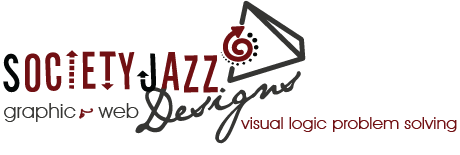Navigating the Digital Fog: Mastering Design Thinking and Creative Processes
In the ever-evolving digital landscape, professionals in the design world often find themselves adrift in a sea of tools, trends, and advice vying for their attention. With over two decades of experience, I’ve learned that the key to mastering design thinking and the creative process lies not in amassing every tool available, but in discerning which ones truly align with your professional journey. Much like a skilled captain navigating through fog, designers must rely on tried-and-true instruments while keeping their focus firmly on their destination. The true art is in knowing what to ignore, allowing you to cut through the noise and streamline your #DigitalStrategy. So, how do you decide which advice to heed and which to dismiss in your pursuit of #ProfessionalDevelopment? Let’s explore strategies for honing your #CreativeProcess and creating a roadmap for success.
Embracing the Design Thinking Mindset
Design thinking is more than just a buzzword; it’s a powerful approach that can transform how we tackle complex problems and innovate in the digital age. Let’s explore how to cultivate this mindset and apply it effectively in your professional journey.
Filtering Through Digital Clutter
In today’s information-rich environment, designers face a constant barrage of tools, trends, and advice. The key to success lies in developing a discerning eye for what truly matters.
Start by identifying your core professional goals and the skills most crucial to achieving them. This clarity will serve as your compass in the sea of digital noise.
Next, establish a system for evaluating new information. Ask yourself: Does this align with my objectives? Will it significantly improve my work or processes? Is it backed by credible sources or successful case studies?
Remember, not every trending tool or technique needs to be in your arsenal. Quality over quantity is the mantra here. By carefully curating your digital inputs, you’ll maintain focus and prevent information overload.
Prioritizing Tools for Impact
When it comes to design tools, more isn’t always better. The most effective designers know how to select and master the tools that truly amplify their capabilities.
Start by assessing your current toolkit. Which tools do you use most frequently? Which ones consistently produce the best results? These should form the core of your arsenal.
For new tools, consider the learning curve versus potential impact. Will the time investment in mastering a new tool yield significant improvements in your work quality or efficiency?
Don’t forget about versatility. Tools that can serve multiple purposes or integrate well with your existing workflow are often worth prioritizing. Remember, the goal is to streamline your process, not complicate it.
Focusing on Destination Goals
In the fog of digital distractions, keeping your eyes on the prize is crucial. Clear, well-defined goals act as a lighthouse, guiding your decisions and efforts.
Start by setting SMART goals: Specific, Measurable, Achievable, Relevant, and Time-bound. This framework helps ensure your objectives are clear and attainable.
Regularly revisit and refine these goals. As you progress in your career and the industry evolves, your destination may shift. Stay flexible and adjust your course as needed.
Remember, goals aren’t just about the end result. Break them down into milestones, celebrating small wins along the way. This approach helps maintain motivation and provides valuable checkpoints for assessing your progress.
Mastering Creative Processes
Developing a robust creative process is essential for consistent, high-quality design work. Let’s explore how to refine your approach and navigate the complexities of the design industry.
Trusted Instruments in Design
Just as a skilled captain relies on trusted navigation tools, designers should cultivate a set of dependable methods and practices.
Start with a solid foundation in design principles. Understanding concepts like color theory, typography, and layout is crucial, regardless of trends or technological advancements.
Develop a systematic approach to problem-solving. Methods like the Double Diamond process or the Five Whys technique can provide structure to your creative thinking.
Don’t underestimate the power of analog tools. Sketching, mind mapping, and physical prototyping can often lead to breakthroughs that digital-only approaches might miss.
Tuning Out the Unnecessary
In the cacophony of the digital world, knowing what to ignore is as important as knowing what to focus on.
Start by identifying your primary sources of distraction. Is it social media? Constant email notifications? Unnecessary meetings? Once identified, develop strategies to minimize these interruptions.
Learn to say no. Not every project or opportunity aligns with your goals. Politely declining can free up valuable time and mental energy for more impactful work.
Create dedicated focus time in your schedule. During these periods, turn off notifications and immerse yourself fully in your creative process. You’ll be amazed at how much more you can accomplish without constant interruptions.
Strategies for Industry Navigation
Navigating the design industry requires a blend of adaptability, continuous learning, and strategic networking.
Stay informed, but be selective. Follow a handful of respected industry leaders and publications rather than trying to keep up with every blog and social media account.
Engage in continuous learning, but focus on depth over breadth. It’s better to become an expert in a few key areas than to have surface-level knowledge of everything.
Build a strong professional network. Attend industry events, participate in online communities, and collaborate with peers. These connections can provide valuable insights, opportunities, and support throughout your career.
Remember, success in design isn’t just about technical skills. Develop your soft skills like communication, empathy, and problem-solving. These are often what set exceptional designers apart in the industry.


